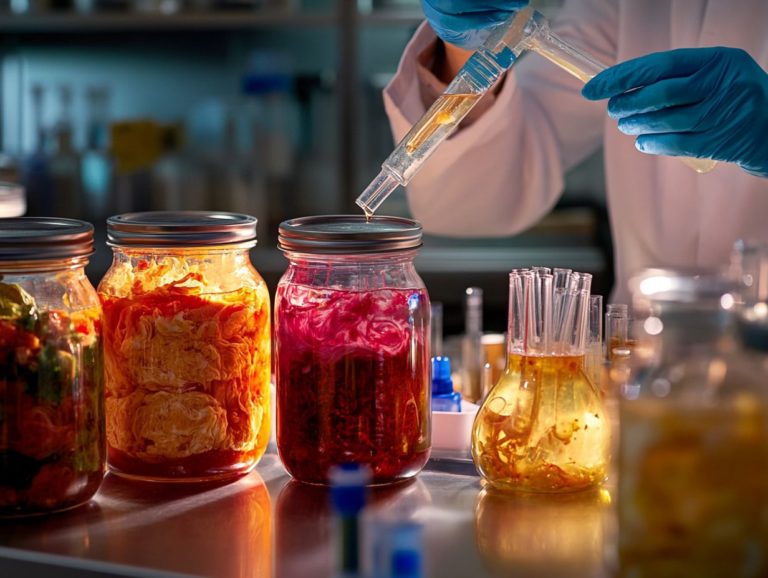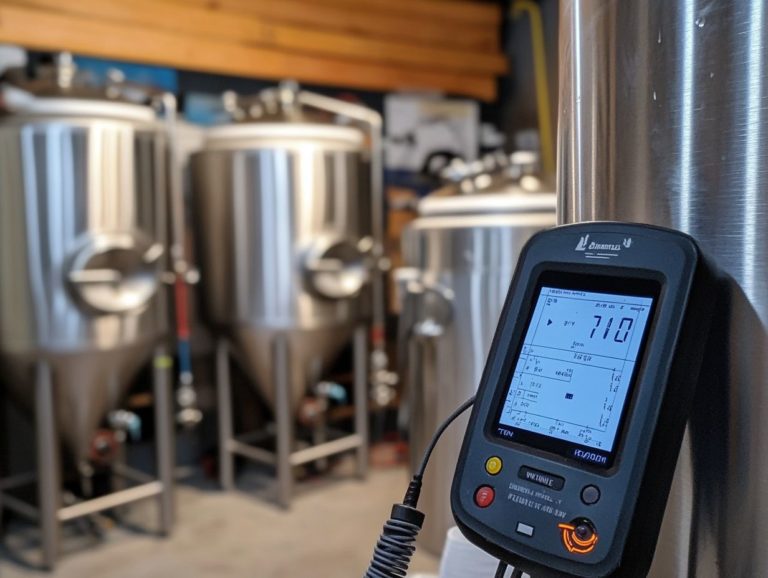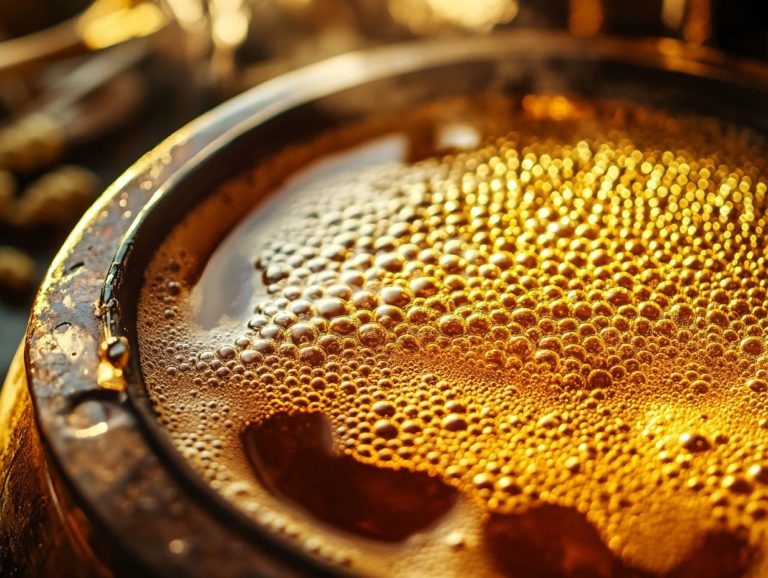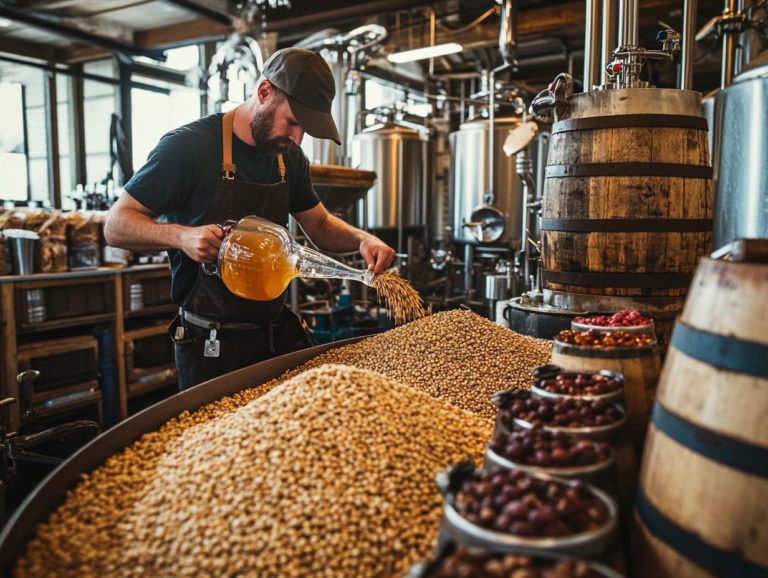Active vs. Passive Fermentation: What’s the Difference?
Fermentation is a revered process that transforms ordinary ingredients into exceptional foods and beverages through metabolic pathways. Whether you re a seasoned cook or a curious newcomer to the culinary realm, grasping the nuances of fermentation and its methods can elevate your kitchen creations to new heights.
This article delves into the two primary types of fermentation active and passive. It will clarify how each process works, highlight their benefits and disadvantages, and showcase the delightful foods they yield. By the end, you’ll be equipped with the knowledge to choose the fermentation method that suits you best!
Contents
- Key Takeaways:
- What Is Fermentation?
- What Are the Different Types of Fermentation?
- What Is Active Fermentation?
- What Is Passive Fermentation?
- What Are the Benefits of Passive Fermentation?
- What Foods Are Commonly Fermented Using Passive Fermentation?
- What Are the Differences Between Active and Passive Fermentation?
- Which Type of Fermentation Should You Use?
- Frequently Asked Questions and Study Questions
Key Takeaways:
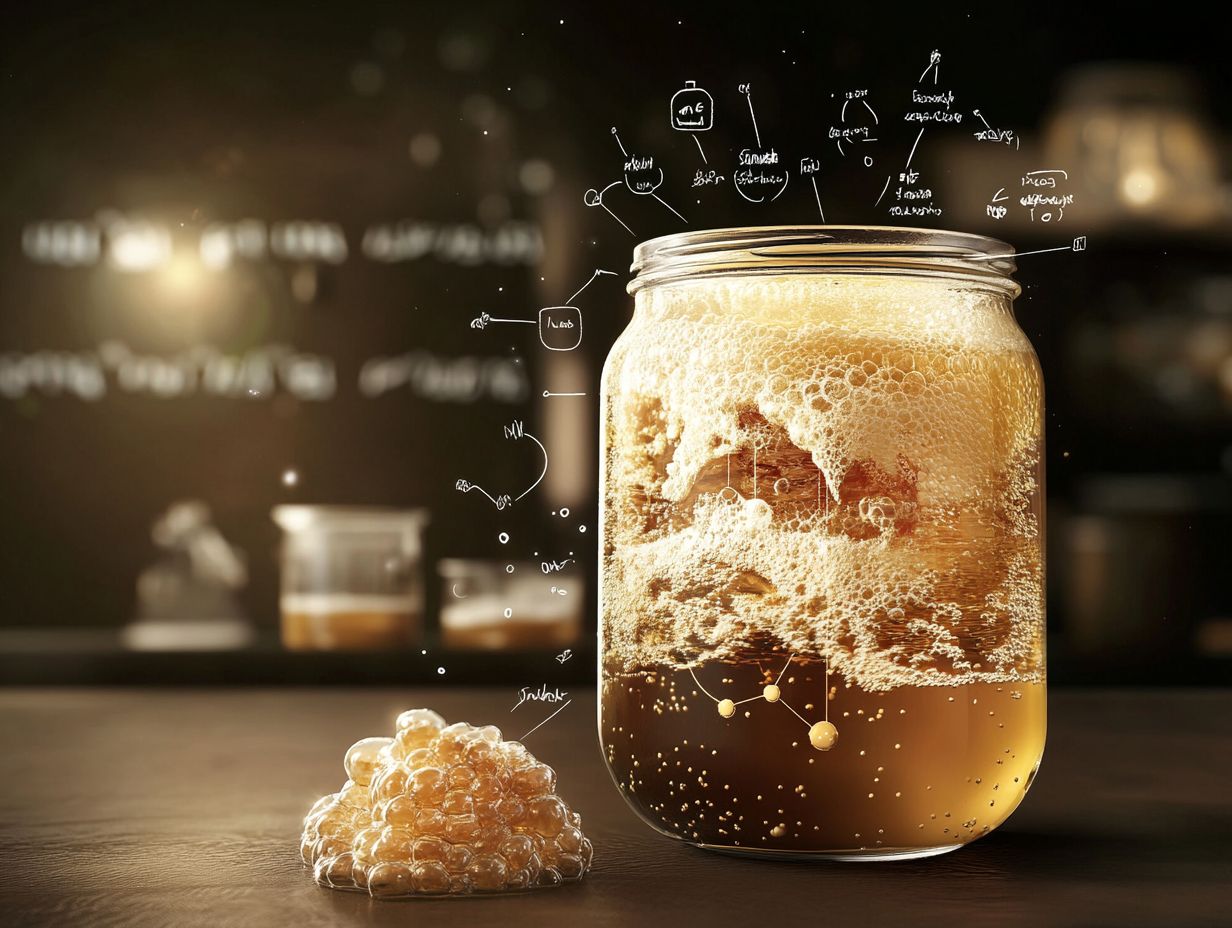
- Active fermentation requires the addition of a starter culture or ingredients, while passive fermentation relies on naturally occurring microorganisms.
- Active fermentation is a faster process, resulting in a tangier and more complex flavor, while passive fermentation takes longer and produces a milder taste.
- Active fermentation is more beneficial for preserving foods and increasing their nutritional value, while passive fermentation is better for producing probiotic-rich foods through lactic acid fermentation.
What Is Fermentation?
Fermentation is a fascinating metabolic process that occurs without oxygen, allowing organisms like yeast and bacteria to transform sugars, such as glucose, into energy. This transformation results in various byproducts, including lactic acid in muscle cells and ethanol during alcoholic fermentation both essential for energy production and many fermentation reactions.
Exploring the intricacies of fermentation provides valuable insights into anaerobic processes and their applications in food production, energy metabolism, and even exercise physiology. The study questions and practice notes can deepen your understanding of fermentation research.
What Are the Different Types of Fermentation?
Fermentation can be categorized into several types, with active and passive fermentation as the primary classifications. These two are distinguished by the metabolic processes and organisms involved.
Active fermentation is marked by the direct engagement of microorganisms, such as yeast and bacteria, resulting in significant transformations in food and energy production. In contrast, passive fermentation unfolds more gradually, often without visible signs of activity, allowing the process to progress quietly yet effectively.
1. Active Fermentation
Active fermentation showcases the dynamic interplay of microorganisms, such as yeast and bacteria, as they energetically convert sugars into energy through their unique processes. This vigorous activity produces vital byproducts like ethanol and carbon dioxide, making it essential for crafting alcoholic beverages, bread, and various fermented foods.
This amazing transformation occurs through a series of chemical reactions involving enzymes, with key enzymes like alcohol dehydrogenase leading the charge in converting sugars into ethanol. A notable byproduct, acetaldehyde, serves as an important intermediate before being further reduced to ethanol.
The importance of active fermentation goes beyond food processing; it plays a pivotal role in energy production, particularly within the biofuel industry, where these microorganisms are harnessed for sustainable energy sources.
As these enzymes and microbial activities engage in their intricate dance, the resulting products not only enhance flavor and texture but also contribute significantly to food preservation and the emergence of distinctive aromas.
2. Passive Fermentation
Passive fermentation unfolds at a leisurely pace, relying on the natural ambient conditions rather than direct intervention from microorganisms. It s the method that allows sugars to develop beautifully into simpler compounds, often observed in the art of yogurt production and specific types of bread-making. This method allows flavors to develop beautifully over time, making passive fermentation an essential element in various culinary traditions.
In contrast to active fermentation, which demands specific strains of yeast or bacteria nurtured in controlled environments, passive fermentation embraces the wild microorganisms that inhabit your surroundings. This natural technique not only deepens flavor in foods like yogurt and sourdough bread but also enhances their texture and aroma.
Take yogurt, for example: as it ferments, lactic acid works its magic, resulting in a creamy texture while simultaneously acting as a natural preservative that extends its shelf life. Similarly, bread crafted through passive fermentation often boasts a unique crust and crumb structure, reflecting the complex flavor profile that emerges from this slow and deliberate process.
These benefits highlight passive fermentation’s crucial role in traditional food production and preservation practices across various cultures.
What Is Active Fermentation?
Active fermentation is a fascinating and dynamic process that transforms glucose into energy in the absence of oxygen, primarily driven by microorganisms such as yeast and bacteria, especially during intense exercise.
This intricate process involves several fermentation mechanisms, including the process of breaking down sugar, which ultimately results in the production of energy-rich compounds like ATP. These compounds are essential for powering cellular activities, underscoring the remarkable efficiency of fermentation in energy conversion.
How Does Active Fermentation Work?
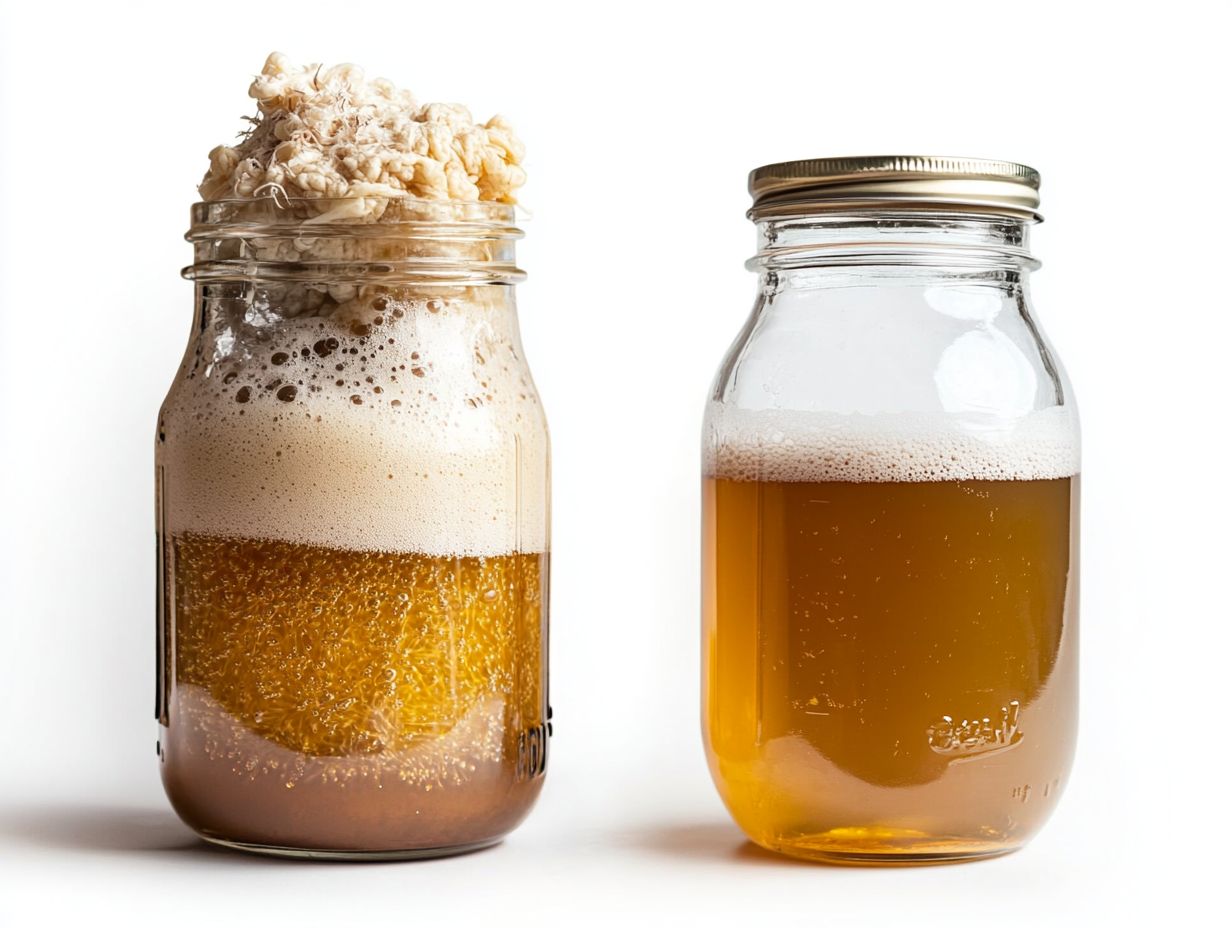
Active fermentation kicks off with the glycolysis process, where glucose is broken down into pyruvate, yielding a small amount of ATP and NADH in the absence of oxygen. This pyruvate can then embark on a journey through various metabolic pathways, transforming into different byproducts, such as lactic acid or ethanol, depending on the microorganism at play.
During glycolysis, a series of enzyme-catalyzed reactions occurs right in the cytoplasm, converting glucose into two molecules of pyruvate while simultaneously generating two molecules of ATP. This crucial energy yield becomes especially significant under anaerobic conditions, where the lack of oxygen hinders ATP production through oxidative phosphorylation.
After glycolysis, the pyruvate is primed for fermentation, a process that varies depending on the organism. In lactic acid fermentation, for example, pyruvate is reduced to lactic acid, facilitating the regeneration of NAD+, which is essential for keeping glycolysis rolling. Alternatively, in alcoholic fermentation, pyruvate is decarboxylated to acetaldehyde, which is then reduced to ethanol, recycling NAD+ and ensuring a steady supply of ATP even in low-oxygen environments.
What Are the Benefits of Active Fermentation?
Active fermentation opens up a world of incredible benefits, from generating energy sources to preserving food by creating natural acids that effectively inhibit harmful bacteria. This remarkable process significantly enhances the nutritional profile of foods, increasing the availability of essential nutrients and probiotics, which can lead to a variety of health benefits.
Not only does fermentation extend shelf life, but it also elevates flavors and textures, making foods more enticing for consumers. Take fermented foods like yogurt and sauerkraut, for example; they offer digestive support and can provide a boost to your immune system. The helpful microbes that thrive during active fermentation contribute to gut health and may help alleviate digestive issues.
This method also encourages the production of vital vitamins, such as B vitamins, while enriching the bioavailability of minerals. As a result, the improved food quality and the promotion of overall well-being render active fermentation an invaluable practice in contemporary diets.
Don’t miss out on the fantastic flavors and health benefits that active fermentation can bring to your meals! Explore the world of fermentation to discover new flavors and health benefits today!
What Foods Are Commonly Fermented Using Active Fermentation?
Active fermentation plays a pivotal role in the creation of a variety of foods and beverages. From creamy yogurt to hearty bread and refreshing beer, each of these products utilizes particular fermentation methods and reactions to cultivate unique flavors and textures. The active participation of microorganisms in these processes elevates taste and imparts a multitude of health benefits.
Among these fermented delights, yogurt is particularly noteworthy for its velvety texture and probiotic qualities, which are essential for supporting gut health. In terms of bread, especially sourdough, the fermentation process adds a pleasant tang. It also enhances digestibility, thanks to the lactic acid bacteria present.
Beer, on the other hand, offers a complex array of flavors, ranging from hoppy bitterness to malty sweetness, all shaped by the fermentation of grains.
Fermented vegetables like kimchi and sauerkraut add a probiotic punch and vibrant flavors to your meals. Each of these culinary creations showcases the rich diversity of fermentation across various traditions. It highlights its remarkable ability to enhance both nutrition and pleasure in your diet.
What Is Passive Fermentation?
Passive fermentation is a natural, less controlled process that allows wild microorganisms to transform ingredients under ambient conditions. It’s often slower than active fermentation, resulting in milder tastes and richer textures in foods like yogurt and sourdough bread.
Passive fermentation is a gentle, unhurried process that unfolds naturally without requiring direct intervention from microorganisms. This method relies on environmental factors and the organic breakdown of sugar, enabling flavors to evolve gradually and ensuring the preservation of various food products.
You can appreciate the nuanced complexity that arises from this subtle approach, as it allows the ingredients to speak for themselves over time.
How Does Passive Fermentation Work?
Passive fermentation unfolds as you allow microorganisms to work their magic on sugar, such as through yeast fermentation and bacteria fermentation, without any environmental nudges. Instead, you let natural elements like temperature and humidity take the lead, enabling a slow and steady fermentation process.
This method can yield delightful products such as yogurt and cheese, where a touch of time and a pinch of patience cultivate rich, tangy flavors.
As you engage in this technique, you ll notice how microorganisms flourish under specific environmental conditions. This reflects the local terroir, significantly influencing the flavor profile and texture of your final creation. For instance, keeping a consistent temperature not too cold, not too hot is essential, as it directly impacts the activity of the bacteria and yeasts involved.
Humidity also plays a vital role in the development of your fermenting food, affecting moisture content and helping to ward off unwanted spoilage.
Don t miss out on the incredible flavors that come from the extended duration of passive fermentation! You ll find that simple ingredients can transform into gourmet experiences, showcasing the intricate beauty of the fermentation process, which includes various fermentation mechanisms.
What Are the Benefits of Passive Fermentation?
Passive fermentation offers many benefits. It improves food preservation, develops intricate flavors, and enhances nutritional profiles.
This method promotes unique textures and tastes essential to many traditional cuisines. By harnessing the power of beneficial microorganisms, passive fermentation extends shelf life and creates culinary masterpieces.
The flavor interplay during fermentation is vital across cultures. Think of the tangy notes in sourdough bread or the rich umami in fermented vegetables.
The nutritional benefits of passive fermentation boost the availability of vitamins and minerals. This fosters healthier eating habits and deepens our appreciation of food, culture, and health.
What Foods Are Commonly Fermented Using Passive Fermentation?
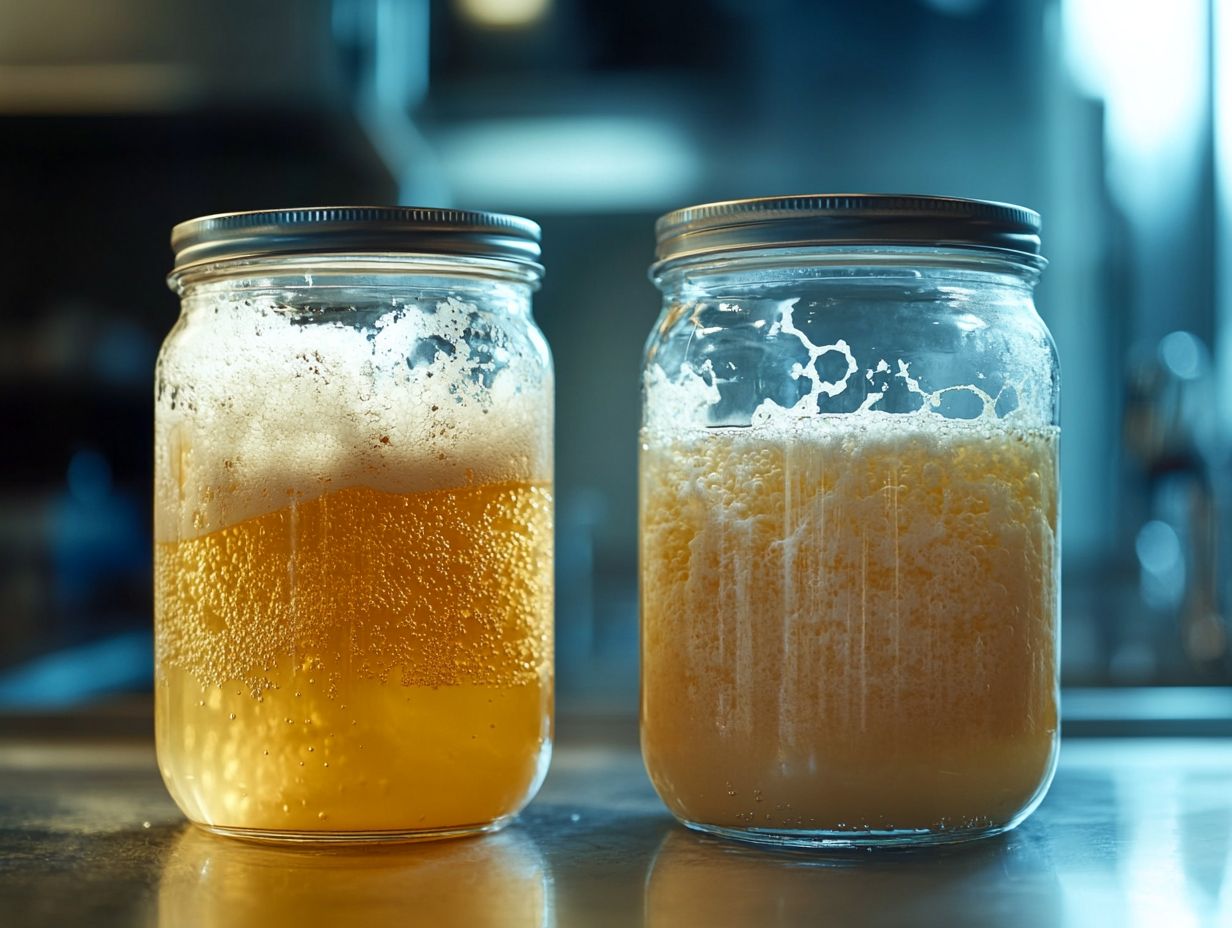
Many foods benefit from passive fermentation, such as yogurt, cheese, and sauerkraut. These natural processes enhance their flavors and preserve quality.
Kimchi and sourdough bread are prime examples. Kimchi, a spicy Korean dish, combines various vegetables and spices for a complex flavor profile packed with health benefits from its probiotics.
Sourdough showcases the essential role of fermentation in baking. Wild yeasts and bacteria create a tangy loaf with a chewy texture, enriching the food’s nutritional value.
What Are the Differences Between Active and Passive Fermentation?
Active and passive fermentation differ in their metabolic processes and resulting flavors. Active fermentation quickly converts sugars into byproducts through microorganisms, producing vibrant results.
In contrast, passive fermentation takes a slower approach, allowing flavors to develop naturally and reflecting the ingredients true essence.
1. Process
Active fermentation involves rapid metabolic reactions led by microorganisms. They convert sugars into energy and byproducts like ethanol and carbon dioxide.
On the other hand, passive fermentation relies on natural environmental conditions, allowing sugars to break down without direct microbial intervention.
Active fermentation thrives in optimized conditions, with factors like temperature and nutrient availability finely tuned. This results in swift transformations and distinct flavors.
Passive fermentation uses wild yeast and bacteria, imparting unique characteristics influenced by local conditions. While slower, this method yields complex flavors that highlight the art of fermentation.
2. Time
Active fermentation usually unfolds within a brief time frame, often finishing in just hours to days, facilitating quick energy production and rapid ATP synthesis. This approach accelerates the fermentation process and leads to rapid transformations in food products. In contrast, passive fermentation can extend over days to weeks, allowing for extended ATP production.
Recognizing these distinctions is essential for you, whether you’re a producer or a chef. The timeline influences not only how swiftly you can prepare food items but also plays a crucial role in shaping the overall flavor profile of the final product.
Take sourdough bread, for example. The active fermentation process contributes to a robust rise, influenced by carbon dioxide production, resulting in a delightful texture. Meanwhile, the prolonged passive fermentation, involving pyruvate conversion and lactate production, deepens the taste, cultivating complex flavors that are highly desirable. This transition between the two fermentation types affects not just the speed of preparation but also the nutritional properties, making timing a pivotal factor in achieving culinary excellence.
3. Taste
The taste differences between active and passive fermentation are striking. Active fermentation often delivers bold, pronounced flavors, thanks to the rapid metabolic activity at play. In contrast, passive fermentation yields more subtle, nuanced flavors that develop slowly over time.
Take products like kimchi and sauerkraut, for instance. They are prime examples of active fermentation, where live bacteria work quickly to produce lactic acid, resulting in a vibrant tanginess that you simply cannot overlook. On the flip side, traditional sourdough bread and naturally fermented cheese showcase passive fermentation, revealing layers of complexity in their taste that evolve beautifully over weeks or even months.
In essence, while active fermentation offers an immediate flavor explosion, passive fermentation is more akin to a slow dance, gradually unfolding deeper and more intricate profiles. This approach appeals to those who truly appreciate nuanced culinary experiences.
4. Nutritional Value
Nutritional value can indeed fluctuate between foods produced through active and passive fermentation. These biological processes involve breaking down sugars and generating energy, with each method presenting its unique advantages, such as enhanced digestibility, improved nutrient availability, and increased energy metabolism.
When you engage with active fermentation, you often benefit from an increase in probiotic content. Passive fermentation offers the delightful perks of enriched flavors and preservation without the need for added preservatives.
In the realm of active fermentation, the presence of beneficial bacteria and enzymes is crucial. These microorganisms aid in breaking down complex carbohydrates and pyruvic acid. They also enhance the bioavailability of vitamins and minerals, making them more accessible for your body to absorb. This process generates key probiotics that support gut health, such as those produced during lactic acid fermentation, which bolster your immune system.
Conversely, passive fermentation relies on natural processes and doesn t necessarily require direct bacterial assistance. This method enhances the flavors and aromas of foods, often elevating their antioxidant properties. The benefits of this method are well-documented in fermentation science. By incorporating foods produced through passive fermentation into your diet, you can relish a diverse array of nutrients while enjoying improved gut flora. This underscores the importance of both methods in fostering a balanced diet.
Ultimately, each type of fermentation plays a significant role in promoting your overall health and well-being. Don’t miss out on the incredible health benefits that both methods offer! Explore more through fermentation research.
Which Type of Fermentation Should You Use?
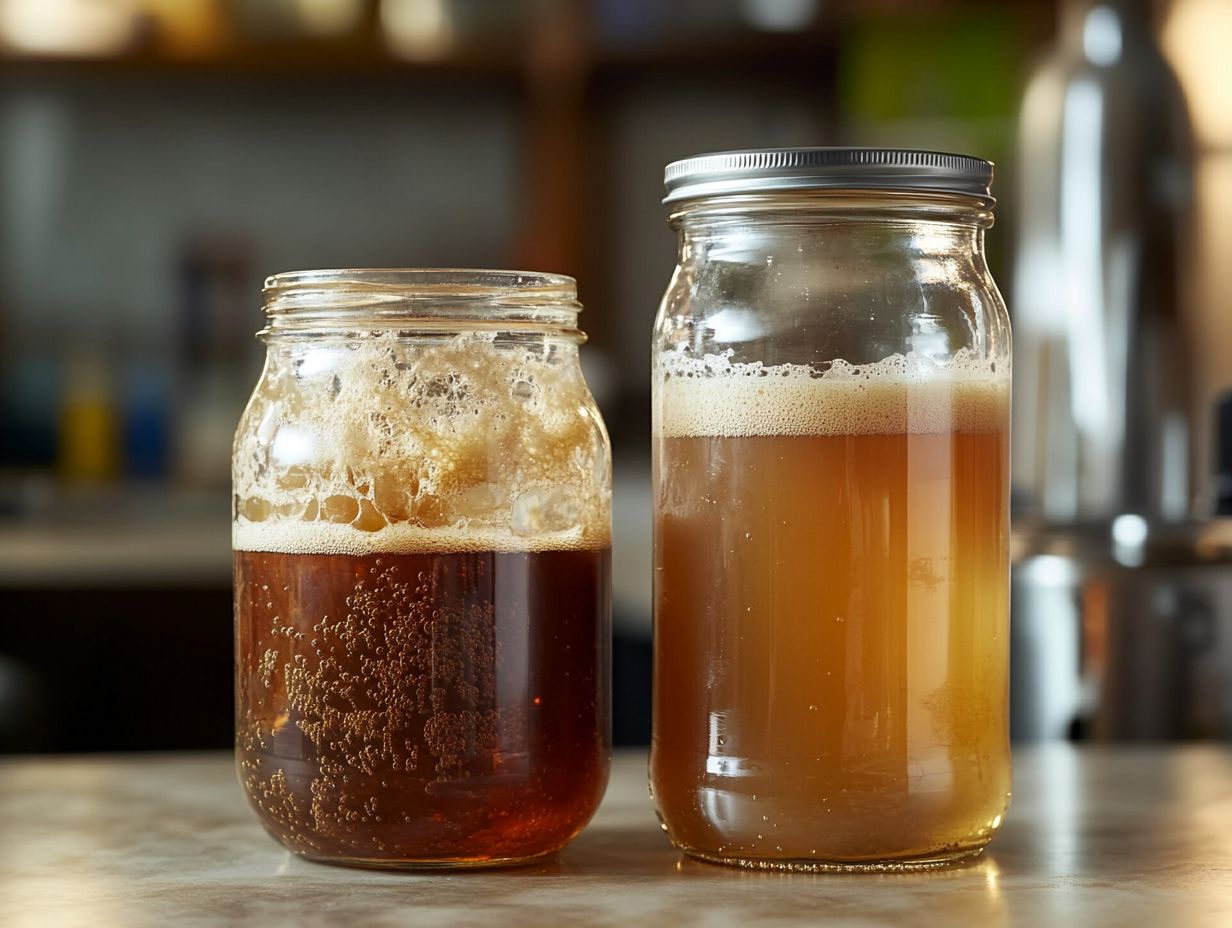
The choice between active and passive fermentation hinges on your culinary goals, the specific attributes you wish to achieve in your final product, and your understanding of various fermentation types.
Active fermentation creates quick products like beer and bread, while passive fermentation shines in traditional staples like yogurt, cheese, and lactic acid, cultivating intricate flavors.
Frequently Asked Questions and Study Questions
What is Active Fermentation?
Active fermentation is a process where yeast converts glucose into alcohol (ethanol) and carbon dioxide, creating a bubbling effect. This stage is vital in producing beer, wine, and other fermented beverages, involving ATP synthesis during glycolysis and the conversion of pyruvate.
What is Passive Fermentation?
Passive fermentation is a slower process where microbes, including certain yeast species and bacteria, naturally present in the ingredients consume sugars and produce alcohol. This method shines in traditional, natural winemaking and bacterial fermentation, involving processes like breaking down pyruvate and producing acetaldehyde.
What are the Main Differences Between Active and Passive Fermentation?
The primary difference lies in yeast usage. Active fermentation uses added yeast strains to kickstart the process, while passive fermentation relies on natural yeast from the ingredients. Active fermentation typically breaks down glucose through glycolysis, whereas passive fermentation depends on the ingredients’ natural metabolic processes.
Active fermentation is faster, yielding more alcohol and involving enzymes like alcohol dehydrogenase and lactate dehydrogenase. In contrast, passive fermentation is slower and results in lower alcohol content, often producing byproducts like acetaldehyde through anaerobic glycolysis.
Which Method is Better for Producing Certain Beverages?
Active fermentation is commonly used for beers, ciders, and some wines, offering more control over the final product. It involves fermentation reactions such as glycolysis and anaerobic respiration. Passive fermentation is ideal for natural wines and sour beers, capitalizing on unique metabolic pathways.
Is One Method Considered Healthier Than the Other?
Both methods can produce healthy and safe beverages when done correctly. Some may view passive fermentation as healthier, as it doesn’t use added yeast or other additives, relying more on natural metabolic pathways and anaerobic conditions.
Can I Choose Between Active and Passive Fermentation?
Yes, your choice depends on the type of beverage you want to produce. Some brewers and winemakers combine both methods for unique results, understanding the intricacies of yeast and bacteria fermentation. This choice impacts the ATP yield and overall energy production during fermentation.
For better understanding, consider tutoring and study questions on these topics. They can enhance your knowledge of fermentation science and research.

